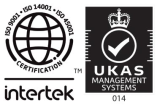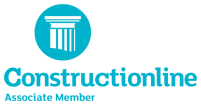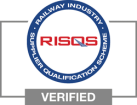Instructions for the safe use of: Lifting Beams and Spreaders
Please note that these instructions are not exhaustive; and they may not be appropriate for all pieces of equipment or applications. Always refer to the manufacturers instructions for your specific equipment. if you are still unsure always consult an appropriately qualified individual.
View further information on the Spreader Beams we offer in our online catalogue
When Using Lifting Beams and Spreaders Always:
- Store and handle lifting beams correctly.
- Refer to the safe use instructions for slings and attachments used with the beam.
- Include the self weight of the beam and attachments when calculating the load imposed on the crane hook.
- Ensure the load will remain stable when lifted.
- Ensure that no one lifting point becomes overloaded by the slinging or handling methods.
- Use tag lines to control long loads.
- Use lifting beams to handle loads other than those for which they are designed.
- Fit lifting beams to a hook other than those for which they are designed.
- Use damaged or distorted lifting beams and attachments.
- Unevenly load lifting beams.
- Allow lifting beams to alter attitude during use.
- Allow lifting beams to foul the underside of the crane or any other obstructions in the area.
- Application requirements - to reduce headroom, provide multiple lift points, to provide adjustable lifting centres, to handle out of balance loads, to remove or control inward or crushing forces, to allow for special load attachments.
- Capacity, both of the overall beam and of the individual lift points.
- Accessories and attachments - slings, grabs, shackles, hooks etc.
When Using Lifting Beams and Spreaders Never:
Selecting the Correct Lifting Beam
Lifting beams, frames and spreaders are usually designed and built for a specific purpose. The range of designs and capacities is therefore only limited by practicality. Select the beam to be used and plan the lift taking the following into account:
Storing and Handling Lifting Beams
Never return damaged lifting beams to storage. They should be clean and, where necessary, protected from corrosion. Lifting beams should be stored in a manner that will provide protection from damage whilst in store. Stands or packing should be provided where this is not built into the beam. Ensure the beam is stable and cannot topple over.
Using Lifting Beams Safely
Lifting beams may incorporate various loose and detachable items of lifting gear. Refer to the separate requirements for the safe use of those items. Do not use defective or distorted beams or attachments. Lifting beams are generally designed for a specific purpose and should not be used for other purposes without consulting the supplier. This will include the size of crane hook from which they are suspended. On no account should lifting beams be suspended from unsuitable size hooks. The weight of the beam, together with its attachments, must be added to the weight of the load when calculating the total load that will be imposed on the crane hook. Ensure that the SWL on the individual lift points is not exceeded. Extra care is needed where these are adjustable. Ensure the load is stable and that the beam remains at its intended attitude during use. Particular care is needed when lifting and setting down as not only may the load become unstable but individual lift points may become overloaded. Use tag lines to control long loads. Do not allow the beam to foul the underside of the crane, or any other obstructions, when raising or transporting loads. Refer to the requirements of BS 7121: Part 1 when using beams with cranes in tandem.
In-service Inspection and Maintenance
Maintenance requirements are minimal for lifting beams. Ensure that bolted joints are sound and that corrosion damage is prevented. Refer to the individual maintenance requirements for associated loose gear and attachments. Regularly inspect lifting beams and, in the event of the following defects, refer the beam to a Competent Person for thorough examination: beam distorted, damaged or corroded; worn, loose or missing bolts; cracked welds; attachment points worn, damaged or distorted, holes and eyes worn or elongated; any other visible defects.







